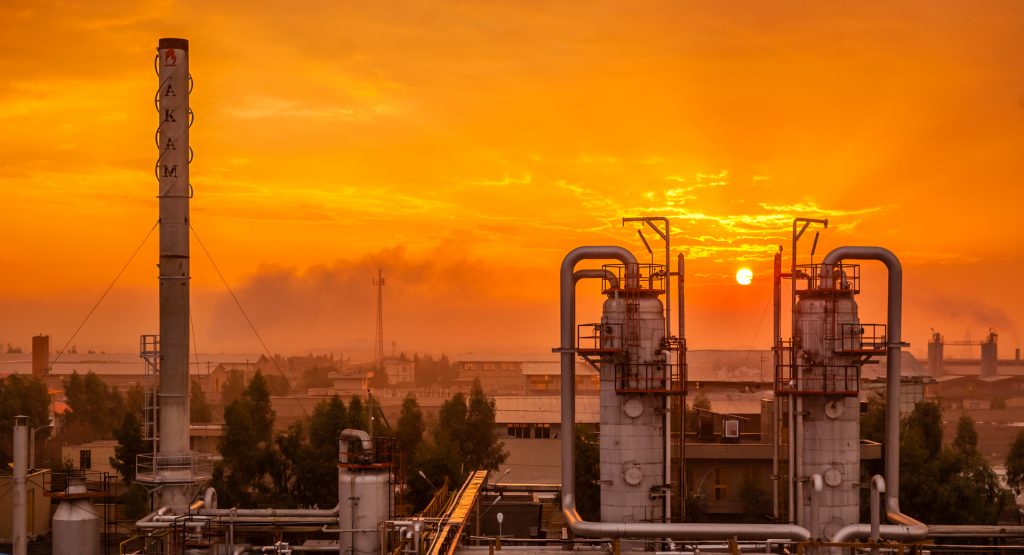Base oils are utilized in the production of various goods such as lubricating greases, motor oil, and metal processing fluids. Various products necessitate distinct compositions and qualities of the oil. The viscosity of the liquid at different temperatures is a crucial factor. The suitability of crude oil for conversion into a base oil depends on the concentration of base oil molecules and their extractability.
Base oil is derived through the process of refining crude oil. Crude oil is subjected to heating to facilitate the separation of different distillates. Through the heating process, a distinction is made between light and heavy hydrocarbons. The light hydrocarbons can be subjected to refining in order to produce petrol and other fuels, while the heavier hydrocarbons are more appropriate for the production of bitumen and base oils.
There is a vast abundance of crude oils worldwide that are utilized for the production of base oils. The predominant variety is a paraffinic crude oil, while there are also naphthenic crude oils that yield products with enhanced solubility and excellent characteristics at low temperatures. Hydrogenation technology can be employed to extract sulfur and aromatics from base oils by subjecting them to high pressure hydrogen. This process yields exceptionally pure base oils that are ideal for applications with strict quality standards.
Additives, which are chemical components, are incorporated into the basic oil to fulfill the quality standards of the final goods, such as friction and cleaning characteristics. Some motor oils have additive concentrations exceeding twenty percent.
Manufacturing of mineral base oils
Petroleum is initially subjected to distillation to obtain mineral base oils, which consist of the portion containing 26-40 carbon atoms. Solvent extraction is used as the initial method to eliminate aromatic chemicals. The distillation fraction is combined with an insoluble solvent, such as phenol or furfural. This solvent exhibits a pronounced affinity for dissolving aromatic molecules, effectively facilitating their separation from other substances.
Long-chain alkanes undergo precipitation as waxes at somewhat elevated temperatures. The waxes can be eliminated through either the process of crystallization at low temperatures or by converting them into branched alkanes through isomerization. Subsequent hydrogenation processes are employed at different stages to eliminate any lingering aromatic molecules and residual heteroatoms, such as nitrogen and sulfur compounds.
In the process of hydrogenation from Group I to Group III, heteroatoms such as nitrogen and sulfur compounds, as well as aromatic compounds, are typically eliminated from the base oil. Decreasing the number of heteroatoms minimizes the production of acids when engine oils come into contact with the combustion environment. Acids have a corrosive effect on the engine. The decrease in aromatic chemicals enhances the oil’s resistance to oxidation, hence delaying the production of sludge and varnish. However, both of these actions result in the oil becoming less polar, which reduces its ability to dissolve the additive package of an engine oil and the accumulated oxidation byproducts.
Classification of APIs
In 1993, the American Petroleum Institute (API) classified base oils into five primary types. Groups I through III are characterized by their chemical and physical properties, which indicate their level of refinement. These properties are related to viscosity at high and low temperatures, oxidative stability, volatility, and other factors. Polyalphaolefins are inherently classified as Group IV oils, while Group V oils encompass oils that do not fall under any other category. The purpose of this category is to ensure that engine oils maintain their performance even when alternative base oils are utilized.
Group I
Originating in the 1930s, this variety is the least refined and is manufactured using solvent refining. Typically, it comprises of traditional petroleum-based oils. In the 1960s, a refining technique known as hydro-treating was introduced as an enhancement, resulting in a base oil that exhibited increased stability, reduced reactivity, and extended longevity compared to its predecessors.
The API categorizes group I as base stocks with a saturates content of less than 90 percent and/or a sulfur content larger than 0.03 percent. Additionally, these base stocks have a viscosity index that is equal to or greater than 80 but less than 120.
Group II
Introduced in 1971, a higher quality petroleum base oil, potentially derived in part through hydrocracking. The oil will undergo a process in which all impurities will be eliminated, resulting in a more transparent tint.
According to the API, group II base stocks are characterized by having at least 90 percent saturates, no more than 0.03 percent sulfur, and a viscosity index between 80 and 120.
Group III
Introduced in 1993, the highest quality of petroleum base oil is generated using hydrocracking, hydroisomerization, and hydrotreating processes, resulting in a purer oil.
According to the API, group III is defined as base stocks that have a minimum of 90 percent saturates, a maximum of 0.03 percent sulfur, and a viscosity index of at least 120.
Group IV
Established in 1974, it comprises of synthetic oils composed of polyalphaolefins (PAO). Group IV base oils exhibit a viscosity index that is within the range of 125 to 200.
Polyalphaolefin oils exhibit superior resistance to oxidation at extreme temperatures and possess remarkably low pour points, rendering them highly ideal for application in both frigid climates, such as those encountered in northern Europe, and scorching environments, such as those prevalent in the Middle East.
Group V refers to any base oil that does not fall into the categories described in earlier groups, and it emerged in the 1940s. Group V oils consist of alkylated naphthalenes, such as ExxonMobil Synesstic, and esters.

